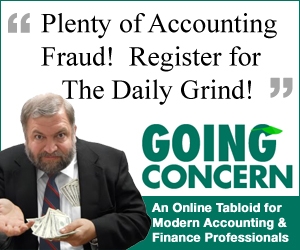
| October 19, 2011 | Issue #109-3 |
Caught in the valuation crossfire, judges fire back by appointing their own experts It’s not unusual for a federal court to appoint a technical expert as an independent advisor pursuant to Rule 706 of the Federal Rules of Evidence. But now, in two high-pressure and high-profile legal settings, judges have taken the unusual step of appointing a 706 expert to testify specifically on valuation—in one case, to calculate damages directly for the jury. Last month, in the closely watched Oracle v. Google litigation, when Judge William Alsup couldn’t convince the parties to select (and pay for) an independent expert, he went ahead and appointed an economics professor to calculate damages—plus a lawyer to represent him. “Far from complicating the jury’s decision on damages,” the judge wrote, in defending his decision, “the testimony of a 706 expert would assist the jury by providing a neutral explanation and viewpoint,” particularly when—as in this case, “both sides have taken such extreme and unreasonable positions regarding damages.” Patent litigators are concerned, however, that the case will turn into a “one witness trial,” as one recent blog reports. Plus—if the jury is aware of the appointment, the 706 expert’s testimony could carry a “powerful stamp of court approval and objectivity.” Objectivity may be precisely the goal of appointing a 706 expert—and time will tell whether Alsup’s move was an aberration (and an attempt to force settlement) or an expanding trend. In federal bankruptcy cases, for instance, the judges are increasingly troubled by the “gangs of bankruptcy debt buyers” whose “abusive tactics” threaten to embroil the cases in valuation disputes and potentially erode the Chapter 11 process, says a bankruptcy blog. At least one bankruptcy judge “has taken some unprecedented and unique actions to combat the problem of valuation wars,” and one of these weapons, “appointing valuation experts to cases, can be used across the nation.” Market says value of S Corps and C Corps differ, says Van Vleet During the past 25 years, the number of S corporations and LLC’s has mushroomed from 750,000 IRS tax filings to about 6 million, according to Dan Van Vleet (Stout Risius Ross), who spoke at last week’s 2011 ASA Advanced BV Conference. During this same time, C Corp filings have declined from about 2.5 million to just under 2 million, Van Vleet added. “The market is telling us something here about the relative value of S corps and C corps.” And for the first time, in Estate of Gallagher the Tax Court considered a tax-affecting analysis that included “an S Corp value premium to the C Corp equivalent value,” Van Vleet said. Although Judge Halpern (who also wrote Gross v. Commissioner) ultimately rejected the analysis for lack of convincing support, he also acknowledged the theoretical rationale for tax affecting: i.e., that most data on which appraisers base private stock values is derived from publicly traded C corps. That may leave the door open for a better-reasoned—and better-supported—tax-affecting analysis to persuade the Tax Court in the future. What went wrong in Gallagher? According to Van Vleet, the analysis:
And it doesn’t end with tax-affecting. In Gallagher, the Tax Court took on a bulleted list of valuation techniques and “tough” spots, including adjustments to a DCF analysis and the reliability of the guideline public company method. To fully appreciate the impact of this case on your current practice, tune in tomorrow, Thursday, Oct. 20, as BVR kicks off its 2011 Online Tax Summit with, “Estate of Gallagher: How the Court Sees the State of Business Valuation,” featuring Chris Mercer (Mercer Capital) and attorney L. Paul Hood, Jr. Consider continuing your tax and valuation curriculum with the rest of the Summit series, including a Lawyers Roundtable on Oct. 28, followed by a Judges Roundtable: View From the Bench on Nov. 4 (both moderated by Jay Fishman); and culminating with Valuing a Majority Fractional Interest on Nov. 11, with Neil Mills-Mazer (IRS). New survey asks: What’s the right number of BV credentials? A current discussion on LinkedIn brought up the recent debate on BV credentialing and the effect of any perceived competition among BV professional organizations. One commentator asked: “Are these calls for a single BV credentialing standard implemented across all organizations; unification of regulatory requirements (IRS, USPAP, DOL, etc.); or perhaps state licensing of business appraisers to ensure quality and standardization?” One respondent suggested that a survey of BV appraisers might be a telling way, not to belabor any dispute, but to sound out the profession on possible solutions. To that end, please participate in our latest, quick and convenient online poll. It’s only two questions, and we’ll keep your responses anonymous when analyzing the results for next week’s ’Wire. ‘Ghost of WaMu’ posts 61-page expert valuation report After Washington Mutual Bank became the biggest failure of any savings and loan in U.S. history, its bankruptcy proceedings languished for over three years, complicated by insider claims against the hedge funds that allegedly traded in the bank’s debt while trying to negotiate a reorganization. Just last month, the court considered the debtors’ sixth amended plan, which essentially cancelled all existing stock, leaving the common and preferred shareholders with nothing, while issuing stock in a reorganized entity to the most senior creditors and equity investors. Not surprisingly, the “out” creditors objected to the plan, claiming it substantially undervalued the stock and overpaid the equity stakeholders. We’ll have a full write-up of In re Washington Mutual, Inc., 2011 WL 4090757 (Bkrtcy.D.Del.)(Sept 13, 2011) in the next (November) Business Valuation Update; the courts’ opinion will be posted soon at BVLaw, In the meantime, business appraisers and insolvency analysts may want to take a look at the 61-page report by the debtors’ expert, posted recently on the “Ghost of WaMu.” Started in 2009 by a former WaMu shareholder who was “burned” by the FDIC’s seizure of the bank’s billion-dollar assets, the site has served as a central repository for the latest filings. “I was pleasantly surprised how well the website did the job,” says the founder (identified only as “Ghost”), who also reports that the expert for the plan objectors provided courtroom testimony only, to rebut the debtors’ report. In fact, the court ultimately credited much of his critique—including the derivation of the WACC by the debtors’ expert and his decision to give little weight to the comparable transactions analysis, which makes the “ghost” posting a solid resource, indeed. Are market comparables harder to find now? Yes, according to Mark Zyla (Acuitas), who also spoke at last week’s ASA BV conference in Chicago. As a result, Zyla is seeing more appraisals give the market approach less weight than in the past. In part, this is because “comparables come and go as M&A activity increases [and decreases],” he told ASA attendees. But the downturn has also created “noise” between market prices and management expectations, Zyla pointed out. “All of your comparables can be ‘distressed’ by market activities, while management still believes equally as strongly in their forecasts.” “You’re going to see more challenges on your comps from the courts, regulators, and leaders in our profession,” he added. To compensate for the lack of good comps, some appraisers are trying to replace ratios derived from recent transactions with the use of longer term multiples—although this could introduce yet another set of assumptions that analysts will need to defend to auditors, attorneys, and other users. FLPs with passive assets are still the most vulnerable Recent cases concerning the viability of taxpayers’ transfers to family limited partnerships (FLPs) as “bona fide” for legitimate, non-tax business purposes have been fairly successful in the Tax Court of late—even when the transfers have involved assets that don’t require active management. Estate of Black, for instance, upheld an FLP in which the partners held the critical “swing” votes on a large block of stock. Similarly, Estate of Mirowski upheld the transfer of patent royalties and related investments, and Estate of Kimball upheld working oil and gas interests. In Estate of Schutt, the court preserved the FLP in large part because it perpetuated the founder’s specific “buy and hold” investment philosophy, even though the assets were marketable securities. A phrase not to use in an engagement letter? In its latest look at an FLP, however, the Tax Court found no such legitimate, non-tax business purpose when the transferred assets consisted primarily of bank company stock and the founder had no specific investment philosophy—and in fact, wanted his grown children to learn about financial management through the FLP. Moreover, the Tax Court didn’t believe the taxpayer’s disavowal of any testamentary intent when his attorney stated in a letter that getting an appraisal was a “key” element of establishing and valuing the FLP “for tax planning purposes.” Look for the complete digest of Estate of Turner v. Commissioner, 2011 WL 3835663 (U.S. Tax Court)(Aug. 30, 2011), in the November Business Valuation Update; the courts’ opinion will be posted soon at BVLaw, along with every important FLP decision in estate and gift tax cases. See for yourself: Hall plays hardball with the IRS Last week, Lance Hall (FMV Opinions), responded to the recently released IRS DLOM Job Aid (which, by the way, the IRS retroactively made “official” by publishing it on its website). In this 100-minute BVR webinar, Hall not only described how the Job Aid misconstrues the FMV Restricted Stock Study, he discussed the methods and continuing merits of the FMV Study. Hall also fielded direct questions from the 126 listeners, including this hard one:
BVR has made this provocative webinar into a new, free video, available here; all presentation materials are included. Legal market is improving—and so is BV hiring Law firm hiring is a good bellwether of how the legal profession is faring—and according to a roundup of recent reports, there are signs that the economic winds are changing. For instance, the annual survey of diversity recruitment among the top 250 law firms by MCCA/Vault shows that minorities and women have made progress this year. “As the legal profession slowly recovers from the recession,” say the surveyors, “recruitment and retention are picking up again.” Summer associate hiring is also picking back up, says a recent Altman Weil post. Despite some economists’ prediction of a double-dip recession in 2012, law firms indicate that they are planning to make the same number of job offers for the 2012 graduating class as they did for the 2011 class—and some may even increase their offers. “ Law firm partners are generally confident of the legal landscape, Altman Weil adds in another post. Its Law Firms in Transition Survey 2011 finds that, overall “economic performance is rebounding, with two thirds of all firms surveyed reporting increases in gross revenue in 2010 and nearly three quarters reporting increases in revenue per lawyer and profits per equity partner.” Standard hourly billing rates are also up significantly this year, with firms reporting or planning a median 4% increase in 2011 billing rates. A similar, positive development in BV hiring. “While we shouldn't expect to return to the pre-recession level of demand, BV hiring is gaining momentum,” observes John Borrowman (Borrowman Baker LLP) in his most recent quarterly newsletter. Potential recruits might believe the recovering market might increase the potential for their working “remote” for a new firm. “Read about why not,” Borrowman says, and what “moving for the right opportunity” might really mean, for the new hire as well as the firm. AICPA to SEC: Give us the IFRS option now The president and CEO of the AICPA challenged the SEC last week “to immediately allow U.S. companies the option of using IFRS,” according to a recent Journal of Accountancy e-report. The option of using IFRS [International Financial Reporting Standards] would be “an effective way for U.S. companies, if they so choose, to level the playing field with their international competitors,” the AICPA president said, and would also narrow the “tremendous disparity” that exists between global companies based in the U.S., and global companies based virtually everywhere else in the world. In related news, the AICPA has “has expressed profound disappointment with a Financial Accounting Foundation (FAF) proposal on private company accounting standard setting and is urging CPAs and others to weigh in on the debate,” says the latest JoA post. The BVWire just reported the FAF proposal last week, and will continue to update the proposal and the financial community’s response. Reality check: death may be more certain for businesses than even dissolution or taxes Neither financial nor valuation literature takes into account the relatively short life expectancy of business enterprises. For example, fewer than 50% of new firms live longer than 10 years, says James R. Morris (University of Colorado at Denver), yet it is common for business appraisers to estimate firm value with a long-term horizon model such as a Gordon Growth or other model that holds growth constant. At the same time, most corporation statutes assume the perpetual lifespan of a business: How are appraisers to reconcile this apparent conflict? In just a week, on Oct. 26, join Morris for Life and Death of Businesses: Firm Mortality and Business Valuation, in which he discusses the “real life” expectancy of firms and demonstrates how to account for the likelihood of their death in valuations. Morris will review the most recent data on firm life expectancy and death rates, culled from the field of industrial organization, so that valuation practitioners can factor the life and death of firms more accurately into their ultimate conclusions.
To ensure this email is delivered to your inbox, please add editor@bvwire.com to your e-mail address book. We respect your online time and privacy and pledge not to abuse this medium. To unsubscribe to BVWire™ reply to this e-mail with 'REMOVE BVWire' in the subject line or use the link below. This email was sent to %%emailaddress%% Copyright © 2011 by Business Valuation Resources, LLC |
|




